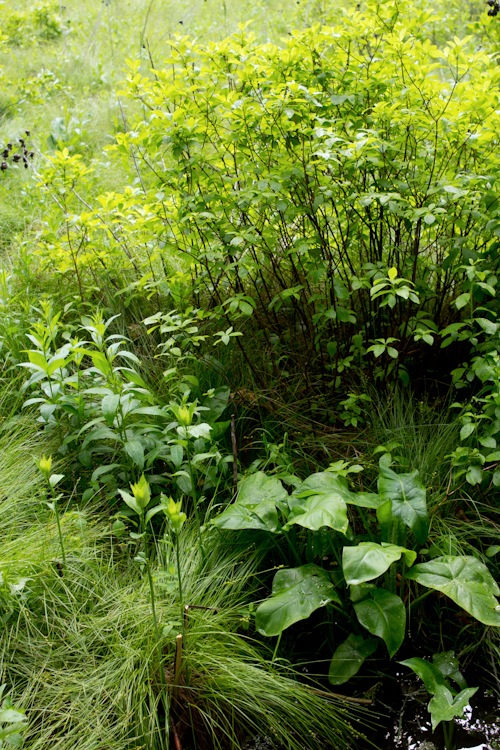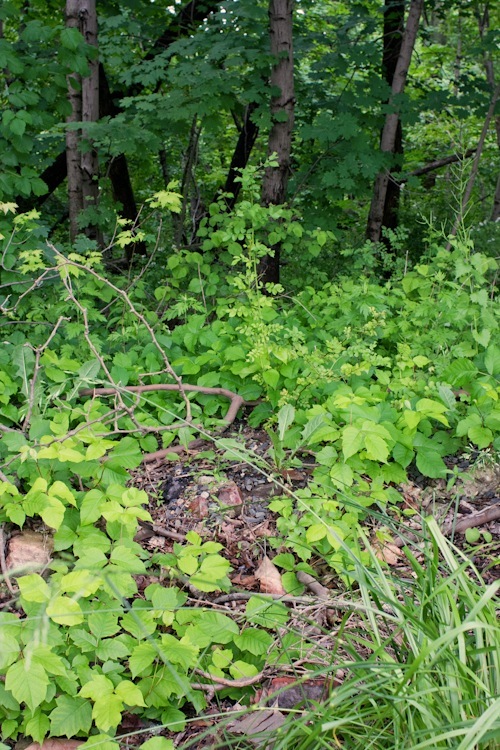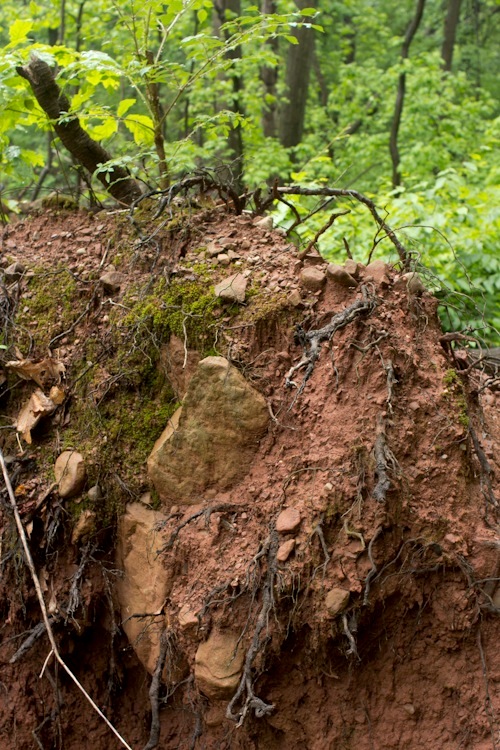
Greenbelt: the Wildest Spot in NYC
June 6, 2013

Below is a satellite shot of the improbable Greenbelt, a four-mile stretch of forest right in the navel of Staten Island. The blue circle marks what is reportedly the wildest spot in all of New York City: the furthest you can be from a house or street and still have your feet on land.

The spot looks like it sits on the edge of a lot of development, but the cleared area to the southwest is a cemetery, and the white dots to the east are the sand traps of a golf course. And listen: it doesn’t matter. When you’re inside the Greenbelt, you are
gone.
Getting there involves a miracle of public transportation—a subway, a ferry, a bus—that takes over two hours, crosses every variety of city landscape, and costs $2.50. These long NYC traverses are some of my favorite traveling. You pack a lunch in your tight apartment with the honks and shouts of the street coming through the window, and when you unpack it, you’re sitting on a fallen tree overhanging a verdant bog that croaks with toads. Inner Staten Island is half-wild anyway; the roads have no sidewalks, and two steps from the asphalt you can get acres of poison ivy. A skip through this patch, right near a bus stop, would be good for two weeks of flaming hell:

High Rock Park is the center of the spread of forest, the “buckle of the Greenbelt,” and there is a whole network of
trails there. I dove off in search of bogs, and saw a lot of old fallen trees—a sight that always speaks to a certain encouraging wildness. Much of the earth of Staten Island, unlike the rest of New York City, is red: iron percolated up with springwater.

I’ve had a special liking for these chunks of red ochre—iron oxide—ever since I read that certain Native Americans used to crush them, mix the powder with bear fat, and spread the paste on their bodies as a sunscreen and insect repellent. The practice might be the origin for the term “
redskin.”

My new happiest place on the planet is a sweet little kettle swamp that was apparently owned by a single patrolling red-winged blackbird. I spent a few hours there, and didn’t see one human.

Here’s what it’s like to go there, and be there:












